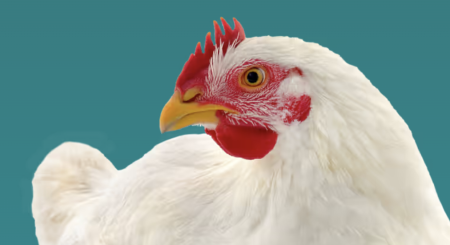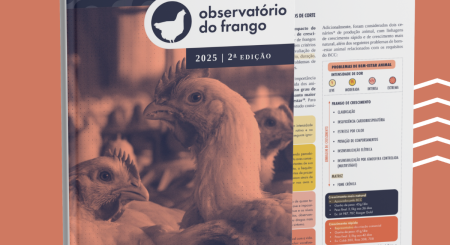Salmon is one of Brazil’s favorite fish. Japa rolls with lots of salmon and other delicacies are often ordered at celebrations or happy hours. And in many diets, fresh salmon is one of the ingredients that cannot be missing.
But do you know the environmental problems involved in salmon production? What’s more, do you know the real origin of this fish?
Before you order grilled salmon or salmon with cream cheese at your next dinner party, it’s important that you know 5 facts about it that will surprise you!
1 – Salmon from Brazil is neither fresh nor from Brazil
Most of the salmon consumed in Brazil is imported from Chile, where there are production farms that developed after the species was introduced to the country. To reach Brazil, Atlantic salmon raised in Chile can be transported by plane, but it is often transported in refrigerated trucks over long distances. Depending on the region of Brazil, this journey can take days, which compromises the freshness of the fish.
Transporting salmon in refrigerated trucks over long distances can affect the quality of the product, especially if adequate precautions are not taken to maintain the correct temperature throughout the journey. The result is that salmon sold as “fresh” in Brazil doesn’t have the same quality and taste as truly fresh salmon.
Watch the video produced by Alianima here, and get a better understanding of how this transportation is carried out and escape this commercial trap.
2 – Salmon sold in Brazil is artificially colored
The characteristic reddish color of wild salmon is the result of their diet in the wild, where they feed on crustaceans, which feed on algae containing astaxanthin, a carotenoid pigment that gives this hue. However, when salmon are bred in captivity, their diet consists mainly of commercial feed instead of the natural food they would find in the wild.
To maintain the salmon’s characteristic color and meet consumer expectations, salmon producers add artificial colorings to their feed. These colorants usually contain synthetic astaxanthin, a red-orange pigment used to ensure that salmon flesh has the reddish color that consumers expect.
Watch our fish expert Carol Maia’s video on the artificial coloring of salmon and its risks to humans and the environment here.
3 – Excessive use of antibiotics in food
To prevent the emergence and spread of diseases, considerable quantities of antimicrobials are used in salmon production. It is estimated that around 473 tons of antibiotics are needed to produce salmon in Chile. These drugs are used to fight bacteria that affect the fish in overcrowded farms.
The intensive use of antibiotics in fish farming can result in negative consequences for the environment. Antibiotic residues in the water of these systems can affect marine fauna, including other fish, crustaceans and marine organisms in general. This contamination can trigger ecological imbalances and lead to the emergence of superbacteria.
4- Salmon can have… Lice!
One of the problems faced by the salmon industry is the infestation of parasites, especially sea lice (Lepeophtheirus salmonis). These parasitic crustaceans can negatively affect the health and well-being of salmon raised in intensive production systems, as is the case in Chile.
Sea lice feed on the skin and mucus of the host fish and, in high densities, can cause significant damage to the fish’s health. Parasitized salmon can become stressed, have their growth compromised and become more susceptible to disease. In more serious cases, heavy infestations of these parasites can even lead to the death of the animals.
This is a concern both for the health of the fish and for the quality of the salmon consumed by humans. To combat parasites, producers often resort to the use of pesticides and other chemical products, which pose risks to both the environment and food safety.
Some producers also adopt the practice of raising “cleaner” fish along with the salmon to help control the infestation, since they feed on the parasites present in the salmon. However, there is still no totally effective solution for eliminating parasite infestation on salmon farms.
In this video content, produced by Alianima, we tell you a little about the parasites that salmon can contain and their risks.
5- Salmon trout, not salmon!
Rainbow trout (Oncorhynchus mykiss) is a species of trout from the same family as salmon, which is raised in production systems in Brazil.
In the process of raising rainbow trout in captivity, some producers adopt the practice of “salmonization”, which consists of providing feed containing the artificial dye astaxanthin to give the trout the orange color typical of salmon.
Some traders take advantage of this similarity in color between the two fish and sell salmonized trout as if it were salmon!
Here you can find more information, in a video produced by Alianima, about this reality that is still so unknown to consumers.
A lot of information, isn’t it? And there’s more!
Waste and toxic chemicals from salmon farming in open sea production systems are a worrying environmental issue. The release of this waste into the marine environment pollutes and damages coastal ecosystems. In addition, the large quantity of fish caught for salmon feed intensifies the pressure on wild populations and contributes to overfishing and the imbalance of the marine ecosystem.
Salmon escapes from farming systems are also a serious environmental problem. By escaping into the ocean, these fish can cause negative impacts in regions where they are not native. They become predators of other animals, compete for food resources and can transmit diseases and parasites, affecting biodiversity and the balance of local ecosystems.
Watch the informative video, produced by Alinima, on how these escapes can impact life in the oceans.
In addition, the high density of salmon in net pens and the restriction of their natural behaviors, such as migration and predation, have a negative impact on animal welfare. Salmon are beings with their own needs and behaviors in their natural environment, and keeping them in artificial conditions can cause stress, disease and compromise their quality of life.
Therefore, seek reliable information about the origin of the food you consume and make choices in line with your values.
A good way to find out more about environmental and animal issues is to subscribe to our newsletter! In it you will receive first-hand articles, booklets and other content aimed at raising awareness about animal and environmental exploitation.










